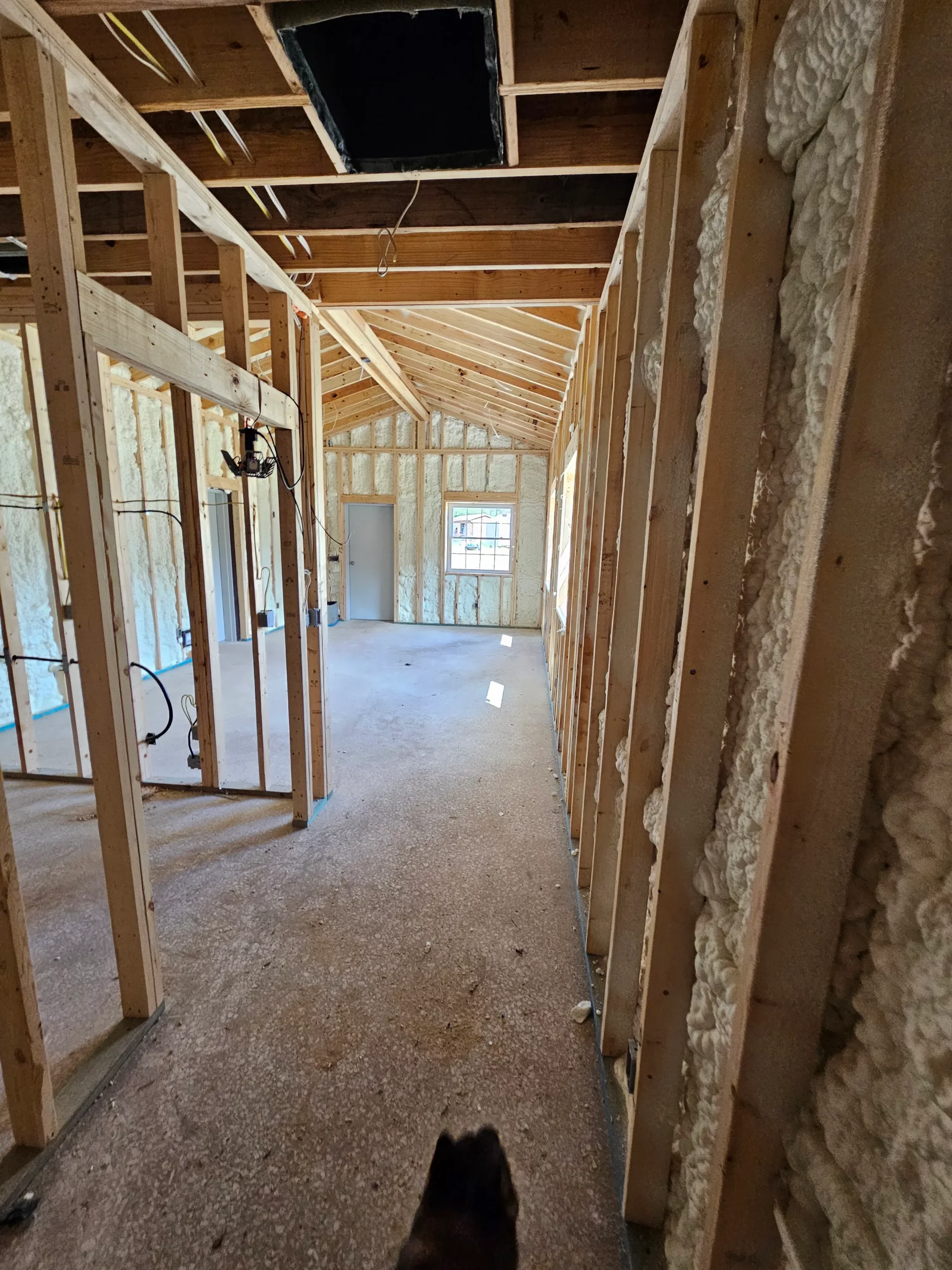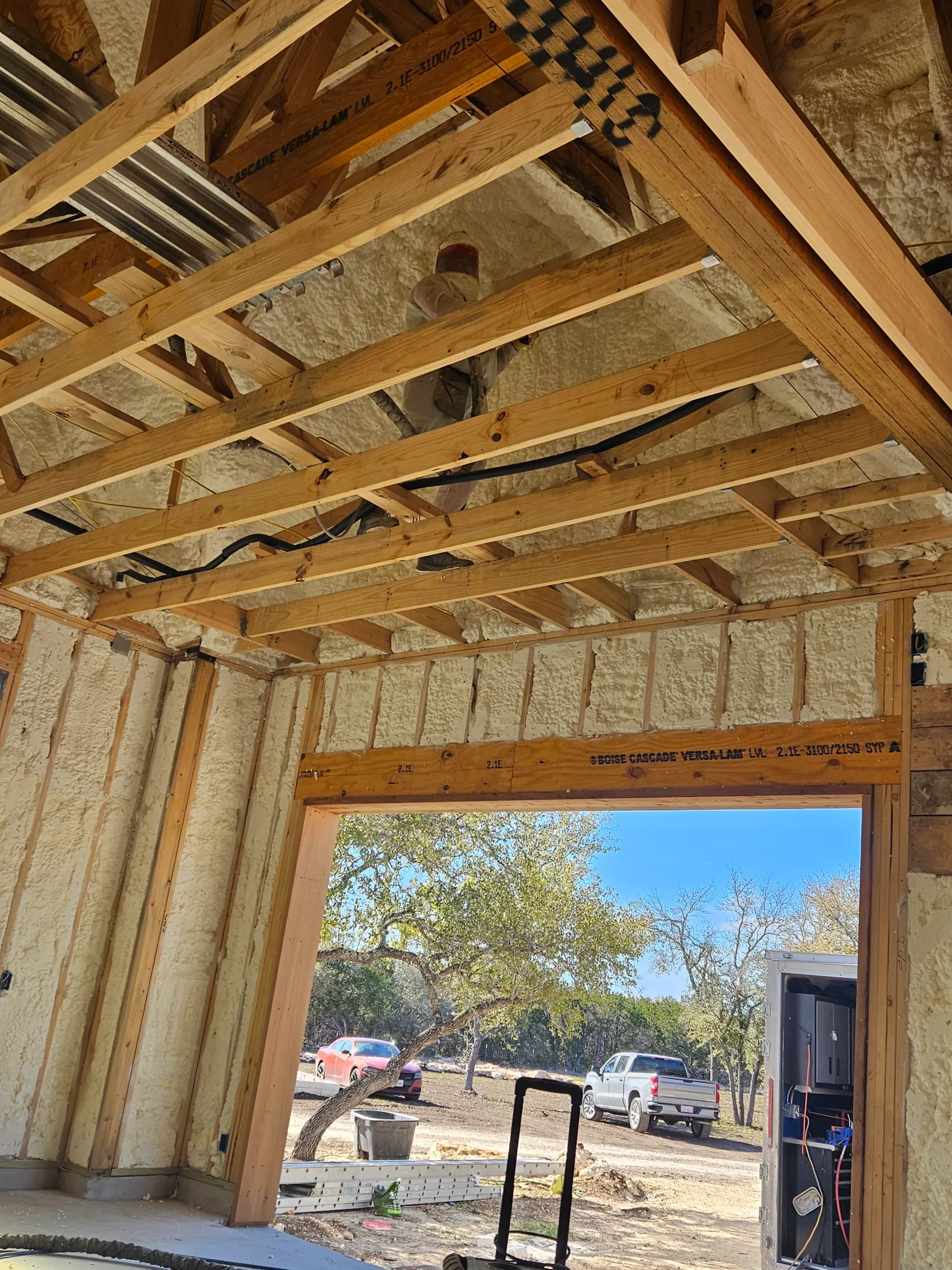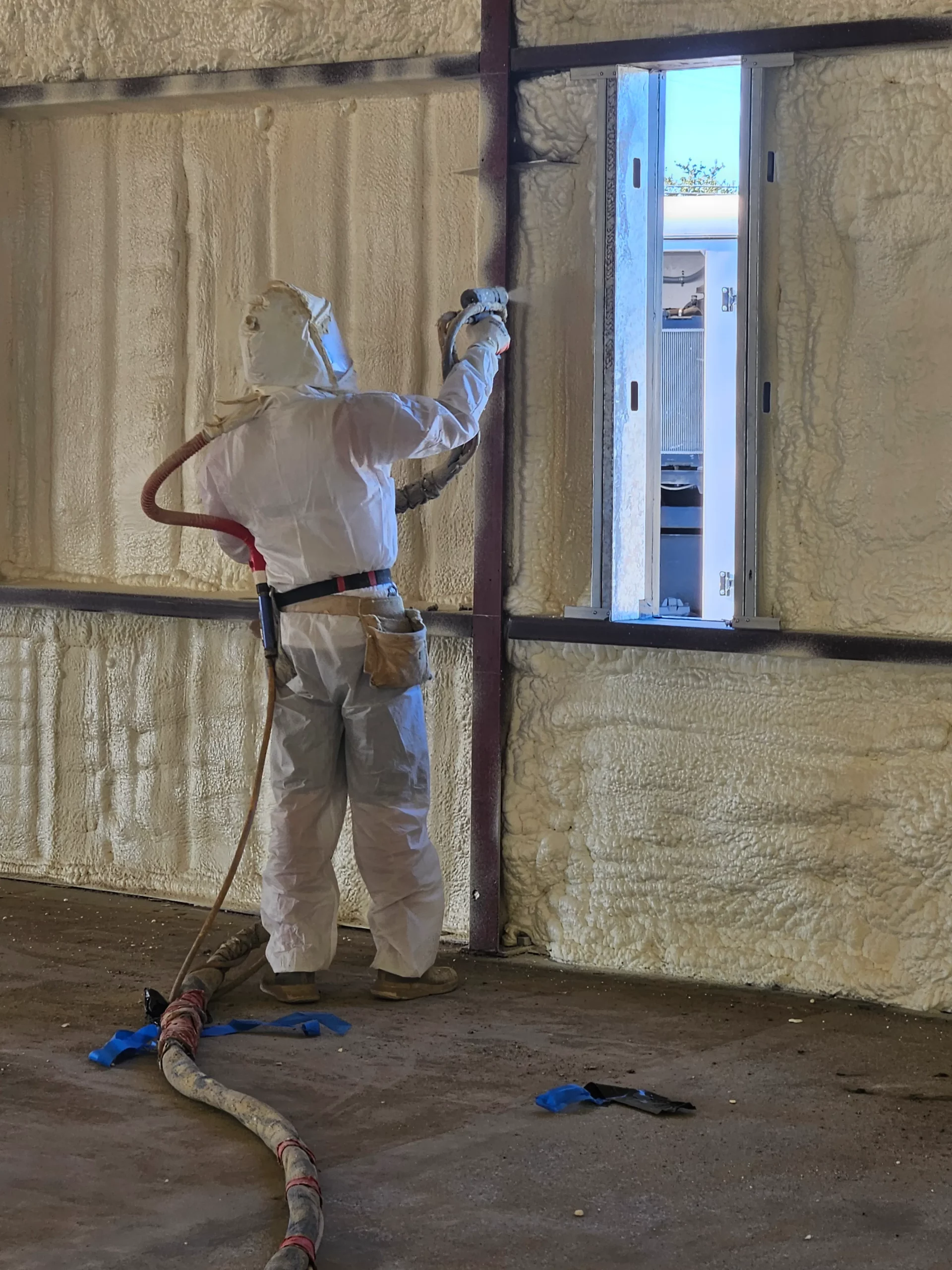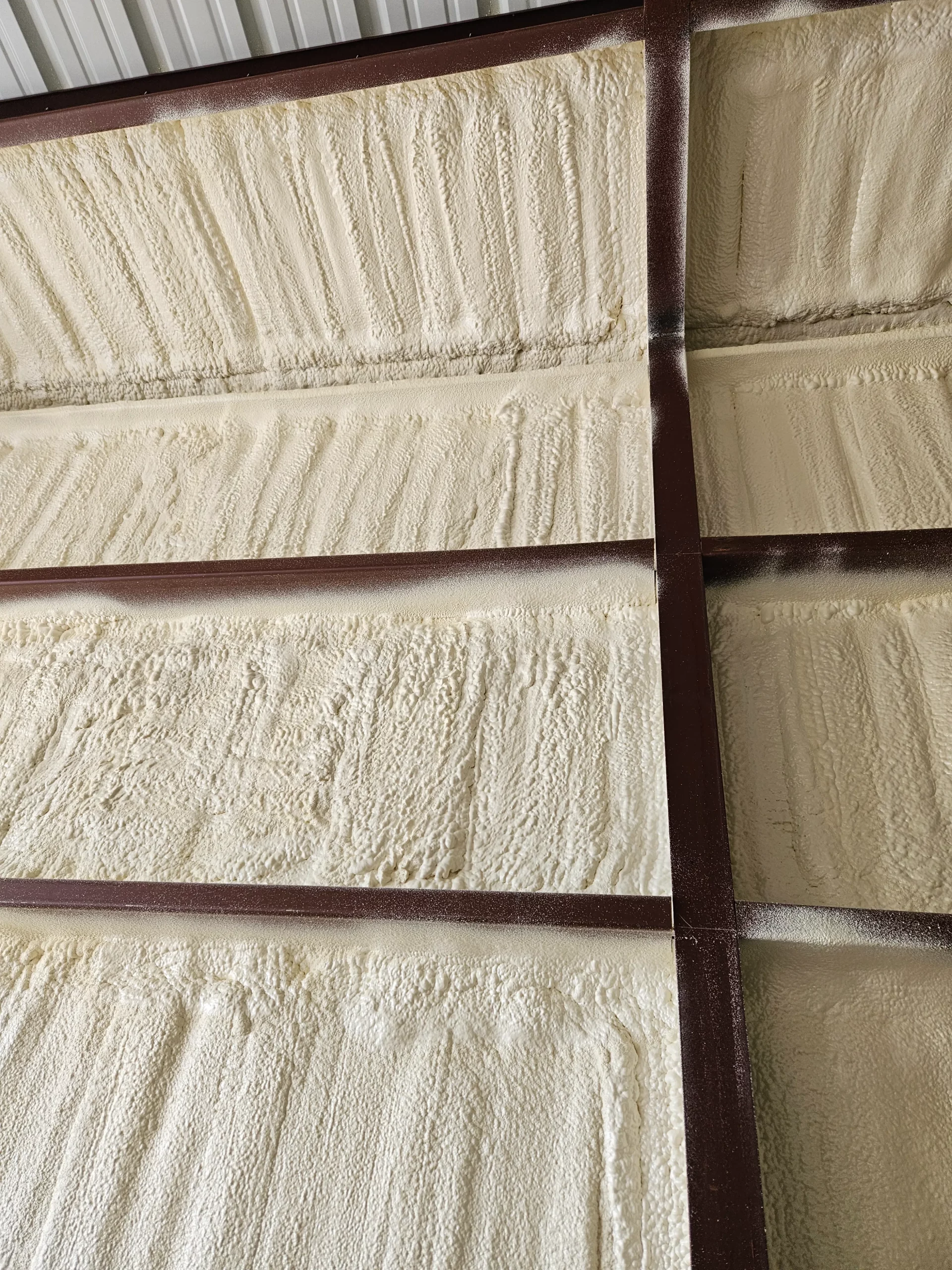

Open-cell spray foam is best used in interior applications where moisture permeability is not a concern, and where sound dampening or air sealing is a priority. It is often chosen for walls, ceilings, and floors in residential and light commercial buildings. Its structure allows for expansion, making it effective in hard-to-reach areas while providing a continuous thermal and air barrier.
Use open-cell foam when indoor humidity is controlled, and vapor barriers are either unnecessary or addressed through other design elements. This type of insulation performs well in regions with moderate climates like Central Texas, where extreme cold temperatures are rare, and vapor drive is less aggressive.
Spray Foam Tech applies this knowledge based on real-world installation experience across residential and light commercial sites. Installers working in variable climate conditions such as Austin and surrounding areas have observed that open-cell foam works most reliably when the building envelope is correctly prepared and the application environment is dry and stable.
Open-cell spray foam is ideal for interior wall cavities where thermal insulation and sound reduction are both required. It expands up to 100 times its liquid volume, filling voids and cracks effectively.
In warm and mixed-humid zones like much of Texas, unvented attic systems using open-cell foam can lower HVAC strain and reduce air infiltration. However, the building must be designed to manage vapor migration correctly.
Using open-cell foam in floors above garages helps limit sound and air transfer, especially when HVAC ducts run through that space.
| Feature | Open-Cell Spray Foam | Closed-Cell Spray Foam |
|---|---|---|
| Density | ~0.5 lb/ft³ | ~2 lb/ft³ |
| R-value per inch | ~3.6 | ~6.5 |
| Vapor Permeability | Permeable | Impermeable |
| Expansion Rate | High (up to 100x) | Low (about 30x) |
| Sound Dampening | Excellent | Moderate |
| Moisture Resistance | Low | High |
| Application Flexibility | Easier to spray in cavities | Requires precise handling |
| Typical Use | Interior walls, attics | Exterior walls, basements |
| Property | Value |
|---|---|
| Thermal Resistance (R-value) | ~3.6 per inch |
| Air Permeability | <0.02 L/s*m^2 @ 75 Pa |
| Noise Reduction Coefficient | 0.7-1.0 |
| Application Temperature | 60°F – 85°F surface temp |
| Cure Time | 4 – 6 hours |
| Flame Spread Index | <25 (ASTM E84) |
According to the Department of Energy, open-cell foam is commonly selected in climate zones 2 through 4 due to its ability to reduce air infiltration without trapping moisture behind the insulation [DOE Source: Energy.gov, 2024 Retrofit Guide].
In Central Texas, where average humidity levels can vary seasonally but are not consistently high, open-cell foam remains a cost-effective option. Installers from Spray Foam Tech frequently see performance gains in attic encapsulations where indoor humidity is controlled via dedicated dehumidifiers or sealed HVAC systems.
The average installed cost of open-cell foam in Texas ranges from $0.45 to $0.75 per board foot, making it a practical solution for large coverage areas without significant exposure to exterior moisture [Cost Data Source: RSMeans Construction Cost Database, 2025].
Avoid using open-cell spray foam in crawlspaces or basement walls unless absolute vapor control is assured.

Spray Foam Tech helps clients select the right insulation based on property use, regional climate, and performance goals. For more information or to discuss a specific project:
Phone: (737) 777-9590
Email: oldworldtx@hotmail.com
Install to a minimum depth of 3 to 5.5 inches depending on code and thermal goals.
It is not mold-proof but limits conditions that promote mold if applied in dry environments.
Yes, in unvented attics with proper vapor management strategies.
Yes, it significantly reduces airborne noise transmission in wall cavities.
It can last over 30 years when correctly applied and protected from moisture intrusion.
No. Existing insulation should be removed to ensure full adhesion and expansion.
Most off-gassing occurs within the first 24 hours. Occupants should avoid exposure during curing.
Less effective in cold zones without a vapor barrier. Closed-cell foam is preferred in such conditions.
Yes. It does not interfere with standard residential electrical systems.


